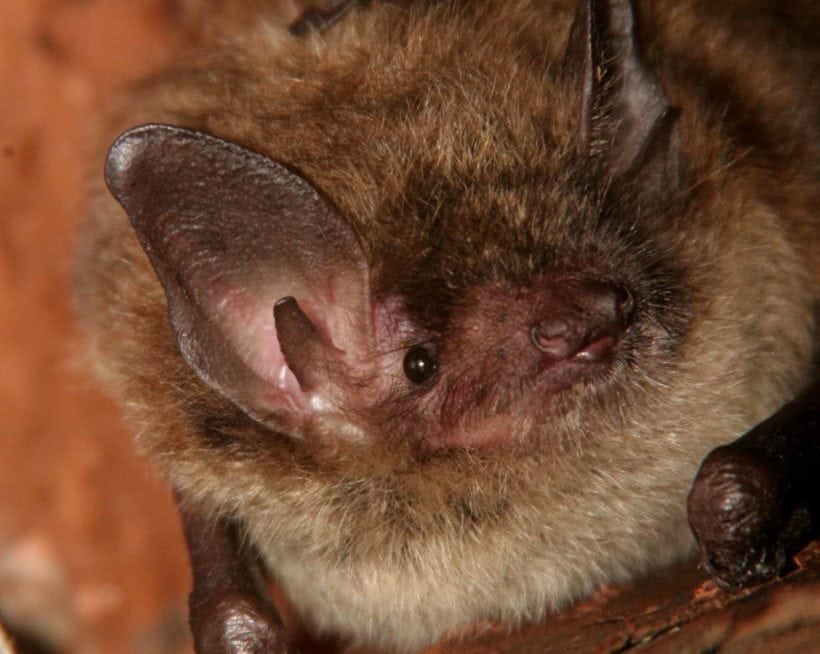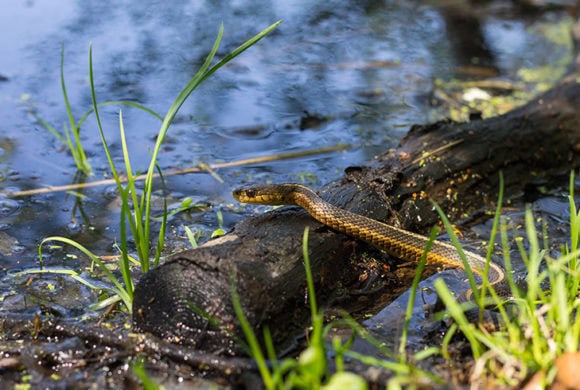Bats are struggling, we can help them
Bats can conjure up any number of spooky images in our heads, and are a misunderstood part of our popular culture. But bats are a very important part of our ecosystem, and need our help more than ever.

The little brown bat (Myotis lucifugus) is one of the most common bats in North America, and one of our region’s native bats.

White nose syndrome is a fungal disease killing millions of bats in North America.
When someone mentions bats, people often get an image of rabies carrying creatures getting tangled in their hair. They might also envision Vampires or the Count from Sesame Street. The visuals are usually dramatic in nature and not an accurate depiction of bats or how we benefit from them.
Did you know that one small brown bat can eat over 1,000 mosquitos in one hour? Bats are the only mammal capable of flight and they use this ability to eat over 30% of their body weight in bugs each night, reducing the number of insects we encounter daily. Often thought of as a rodent, this mammal is actually closely related to primates and humans. Just like us, a bat’s wing has a thumb and 4 fingers!
Misinformation from press and myths are not helping this struggling species.
In 2017 and so far in 2018, the NYS Department of Health has received 115 bats killed and sent in for rabies testing. According to the Rabies Laboratory reports, only 2 out of those 115 bats were rabies positive. According to the DEC only 0.5% of bats actually carry rabies — but that doesn’t mean you should pick up a bat if you find one. Like all wildlife, they can bite if threatened and scared.
But misinformation isn’t the only things bats are up against. White Nose Syndrome is a fungus that attacks hibernating bats and has already killed millions.“We are already losing bats to the worst natural disaster to befall mammals in our history, White Nose Syndrome.” Says CT bat rehabilitator Linda Bowen.
If we can help this struggling mammal by changing a few things we do it could make a huge difference.
Simple ways you can help
1) Make sure eaves and other areas of your house are properly sealed so a bat doesn’t accidently enter your home
While you should always use caution around any wild animal, there are options if one is in your house:
- A bat in flight in your home: Turn on some lights in order to see the bat. Close doors to other rooms of the home in order to restrict the bat’s access to a small area. Open all exterior windows or doors in the room. The bat can then use its echolocation to navigate a safe path outside.
- Bats roosting (resting) in your home: The best solution is to contact a humane wildlife trapper. Do not attempt to exclude bats during the winter while they are hibernating. Instead, wait until the spring and summer when they are active. Make sure the site is clear of any hibernating bats before sealing all potential entry points into your home spaces.
- These helpful hints can be found here: https://www.dec.ny.gov/animals/59376.html
2) If you see one on the ground, leave it alone
Bats need to be high up to launch into flight, so they can sometimes be found on the ground crawling to a good spot. Keep yourself, children, and pets away from the area and If you find it is still there after a few hours, contact a humane wildlife trapper.
3) Go pesticide/insecticide free
Bats need insects to eat and are made sick or killed by the insects they eat that have ingested these substances. Some safe options for bugs control are diatomaceous earth or other non-toxic, natural remedies.
4) Promote natural bat habitat
Dead trees that don’t pose a threat are great roosting sites for bats. The more safe roosting sites bats have, the less likely it is you’ll find them in places you don’t want them.
5) Put up a bat house
www.batcon.org has some plans! Teatown’s facilities and grounds manager, Kevin Schroeder, loves having his bat house up. He has noticed a significant drop in the amount of flying insects in his yard and enjoys watching the bats fly over at night.



